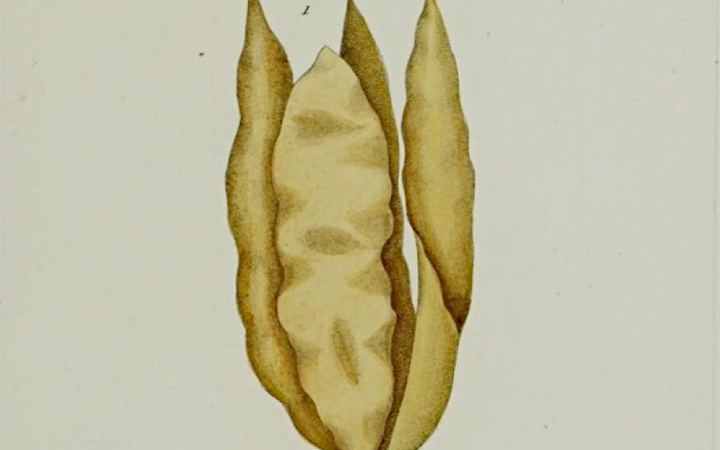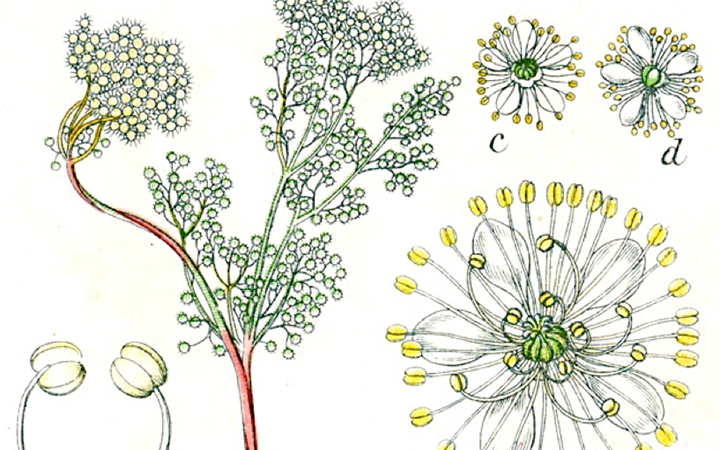For best results print the cards using the Firefox Browser
Cards
(QUICK LINKS: Decks | plants | mammals | birds | | reptiles | fish | cephalopoda | insects | microbe | events
( scientist | project | modifier | technique |)

Duckweed
Lemnoideae subfamily


Sorry, there is no photo available. If you have one, please submit
here
.
3 POINTS
Fact: Duckweed is an important high protein food source for waterfowl. As it contains more protein than soybeans, it is often cited as a potential human food source.
cool, warm
Graphic by Edward Step (1895)
Duckweeds, or water lens, are flowering aquatic plants which float on or just beneath the surface of still or slow-moving bodies of fresh water and wetlands. Also known as “bayroot,” they arose from within the arum or aroid family (Araceae),[1] and therefore, often are classified as the subfamily Lemnoideae within the Araceae. Classifications created prior […] read more

Himalayan Blackberry
Rubus armeniacus


Sorry, there is no photo available. If you have one, please submit
here
.
2 POINTS
Fact: Native to Armenia and Northern Iran, the species was introduced to Europe in 1835 and to Australasia and North America in 1885.
cool, warm
Graphic by F.W. van Eeden (1893)
Rubus armeniacus, Armenian Blackberry or Himalayan Blackberry, is a species of Rubus in theblackberry group Rubus subgenus Rubus series Discolores (P.J. Müll.) Focke. It is native to Armenia and Northern Iran, and widely naturalised elsewhere. Both its scientific name and origin have been the subject of much confusion, with much of the literature using one […] read more

Kelp
Laminaria genus


Sorry, there is no photo available. If you have one, please submit
here
.
2 POINTS
Fact: Kelp grows in underwater “forests” (kelp forests) in shallow oceans.
cool, warm
Graphic by Marc Pietro (1829)
Kelps are large seaweeds (algae) belonging to the brown algae (Phaeophyceae) in the orderLaminariales. There are about 30 different genera.[citation needed] Kelp grows in underwater “forests” (kelp forests) in shallow oceans, and is thought to have appeared in the Miocene, 23 to 5 million years ago.[2] The organisms require nutrient-rich water with temperatures between 6 […] read more

Meadowsweet
Filipendula ulmaria


Sorry, there is no photo available. If you have one, please submit
here
.
2 POINTS
Fact: It is known by many other names, and in Chaucer’s “The Knight’s Tale,” it is known as Meadwort.
cool, warm
Graphic by Jacob Sturm (1796)
Filipendula ulmaria, commonly known as meadowsweet[1] or mead wort,[2] is a perennial herb in the family Rosaceae that grows in damp meadows. It is native throughout most of Europe and Western Asia(Near east and Middle east). It has been introduced and naturalised in North America. Juncus subnodulosus–Cirsium palustre fen-meadow and Purple moor grass and rush […] read more

Pedunculate Oak
Quercus robur


Sorry, there is no photo available. If you have one, please submit
here
.
2 POINTS
Fact: Quercus robur is a large deciduous tree, and is also known as the English Oak.
cool, warm
Graphic by O.W. Thome (1884)
Quercus robur is commonly known as the English oak or pedunculate oak or French oak. It is nativeto most of Europe, and to Anatolia to the Caucasus, and also to parts of North Africa. Quercus robur is a large deciduous tree, with circumference of grand oaks from 4 m (13 ft) to exceptional 12 m (39 ft).[citation needed] The […] read more

Woodland Strawberry
Fragaria vesca


Sorry, there is no photo available. If you have one, please submit
here
.
2 POINTS
Fact: It is also used as a genetic model plant for the garden strawberry and the Rosaceae family in general.
cool, warm
Graphic by O.W. Thome (1885)
Fragaria vesca, commonly called wild strawberry, woodland strawberry, Alpine strawberry, European strawberry, or fraise des bois, is a perennial herbaceous plant that grows naturally throughout much of theNorthern Hemisphere, and that produces edible fruits. Typical habitat is along trails and roadsides, embankments, hillsides, stone- and gravel-laid paths and roads, meadows, young woodlands, sparse forest, woodland […] read more